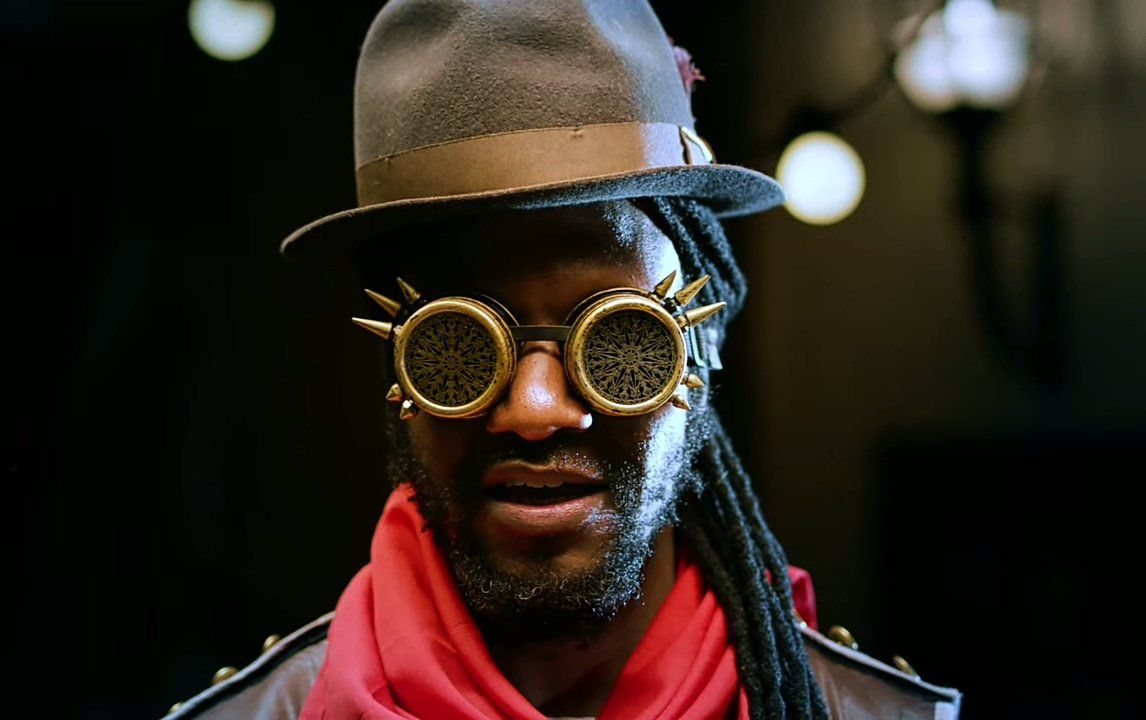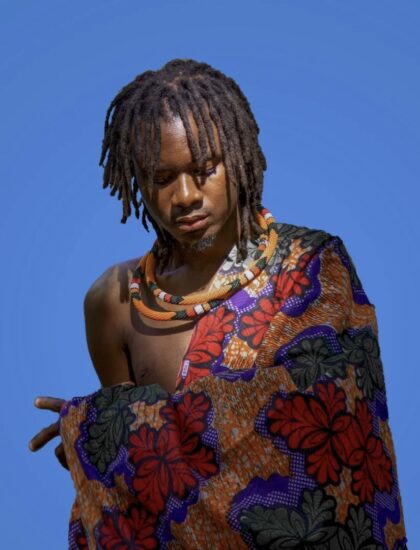When Gaborone contemporary fine artist and photographer Letso Leipego embarked on his series of portraits titled Tell My Story five years ago, he rambled through the outlying corners of Botswana.
With a mission to tell a bizarre story about the country and its culture, he recognised a strong interest in the native Tswana culture, particularly from both frequenting tourists and social media. Essentially, his energies were focused on developing portraits that reveal the majesty of the people, the dramatic beauty of the land, and the powerful synergy that occurs when they are in harmony together.
Decoding his adventure to Huckmag.com, he had this to say;
“Botswana is a country of different races and cultures, but what I admire most is the peace and tranquillity that reigns within the core of the country…Despite the difficult challenges that the people endure daily, their spirit of solidarity and cultural communion makes them resilient and keeps them upbeat…”
At the time this was published, I didn’t get what Letso meant when he said that the topographically flat country with just two million people had different races and cultures, although most of his lense game could hint it. Conforming to his own words, his photography always “call attention to things that the observer tends to overlook”.
I guess one of the elements that most of us have meticulously missed or overlooked about the Southern African country was that it does not only make life look beautiful and preserved; rather it is very much the fountainhead of modern human life. In laymen’s words, it is the ancestral homeland of all humans alive today, if the finding of a new research is anything to go by.
In a new study conducted by a dozen scientists from three continents and published in the journal Nature, researchers analysed mitochondrial DNA — genetic information that gets passed down the female line — from over 1,200 people across oodles populations in Africa. By examining which genes were preserved in people’s DNA over time, the anthropologists determined that anatomically modern humans emerged in the Greater Zambezi River Basin – a northern part of Botswana.
Searching for the homeland of the modern human species has been a fundamental quest in science and culture, particularly because we all carry genetic echoes from our original fathers and mothers. While some fossil evidence agrees that Homo sapiens sapiens, famously known as modern humans, arose in Africa around 200,000 years ago, they’ve remained uncertain about exactly where on the continent that evolutionary milestone occurred. The specimens — known as the Omo remains — were discovered in Ethiopia. And yet the Omo fossils lost their mantle as the oldest known sapiens when a 300,000-year-old skull was found in Morocco two years ago.
The Morrocan artefact is, however, 100,000 years older than the date scientists have proposed for the Botswana origins. The study offers a key answer to the question of the origins of modern man as it undermines that the DNA evidence they got has pointed to Botswana.
“It has been clear for some time that anatomically modern humans appeared in Africa roughly 200,000 years ago. What has been long debated is the exact location of this emergence and subsequent dispersal of our earliest ancestors. We’ve been able to pinpoint what we believe is our human homeland,”
said anthropologist Vanessa Hayes who doubles at the paper’s senior author.
The University of Sydney researcher told the press that the findings suggested “everyone walking around today” could trace their mitochondrial DNA back to this “human homeland.” She suggested that the ancestors of modern humans thrived for 70,000 years in Botswana and parts of Namibia and Zimbabwe before climate change led them to migrate out of Africa and span the globe ultimately.
To trace the geographic origin of our ancestors, Hayes et al. examined mitochondrial DNA (mtDNA) from people living in southern Africa, such as the Khoisan. mtDNA, which is passed down the maternal line, is often used to trace human ancestry because it isn’t mixed with paternal DNA. That means it changes less over time and leaves a clearer link to distant relatives.
When it comes to mtDNA, modern humans all share a group of genes called the L macro-haplogroup. This L-branch is split into two subgroups: L1-6 and L0. The latter can be found in the peoples of southern Africa, and that’s what Hayes’ team analysed. Eva Chan, a co-author of the study, said this was the “by far the largest L0 study to date.” By pulling on that genetic string, the researchers were able to figure out that every person alive today descended from a woman who lived in modern-day Botswana about 200,000 years ago.
The ancestor, the study says, emanated from the Makgadikgadi basin in Botswana. The region, although it now contains arid salt flats, was once a lush wetland filled with enough animals and edible vegetation to sustain our hunter-gatherer ancestors, as per the study.
The new genetic analysis also offers credence to the idea that all modern humans evolved in one place in Africa before migrating to Europe, Asia, and Australia — what’s known as the “Out of Africa” hypothesis — rather than evolving separately in multiple places around the world at the same time.
But as is always the case with many eccentric schools of thought and modern-day discoveries that point to Africa as the cradle of humanity, a debate has arisen. Whereas genetics appears to show one thing about human history, fossils and artefacts point to something completely different.
Ryan Raaum, an anthropologist and African population genetics researcher at Lehman College, New York, thinks the new study itself has a significant flaw. According to him, the scientists didn’t go back far back enough on the genetic timeline.
“Where I get a little lost in the weeds is when they expand out to argue that these data indicate a southern African origin for anatomically modern humans. The data do not,” the researcher told an international medium.
Raaum added that he evidently resented the phrase “ancestral homeland” in general, since modern humans likely had multiple homelands scattered around the African continent.
“I increasingly think that there probably wasn’t a single population in which modern humans evolved. If that is the case, there is no ‘homeland,’” he said.
But whether or not Botswana was the fons et origo of life for everyone alive today, the new research certainly suggests this part of Africa was an oasis for our ancestors — a significant addition to our understanding of human evolution. More importantly, it confirms my notion that Botswana was a distinctly exceptional place.




















